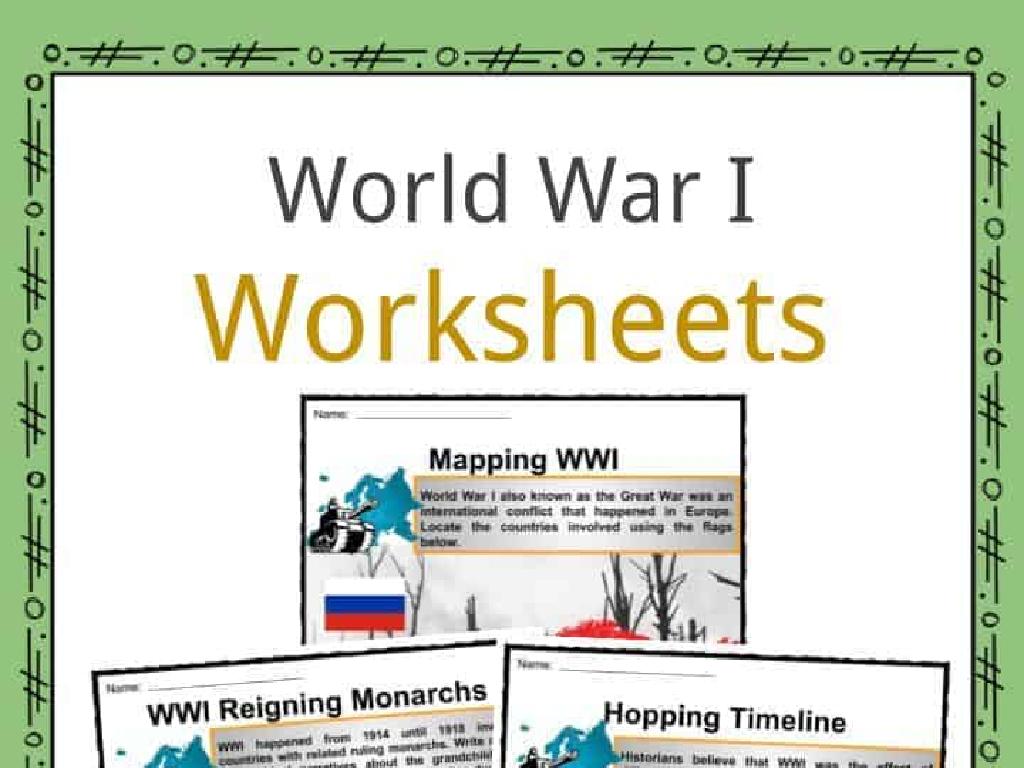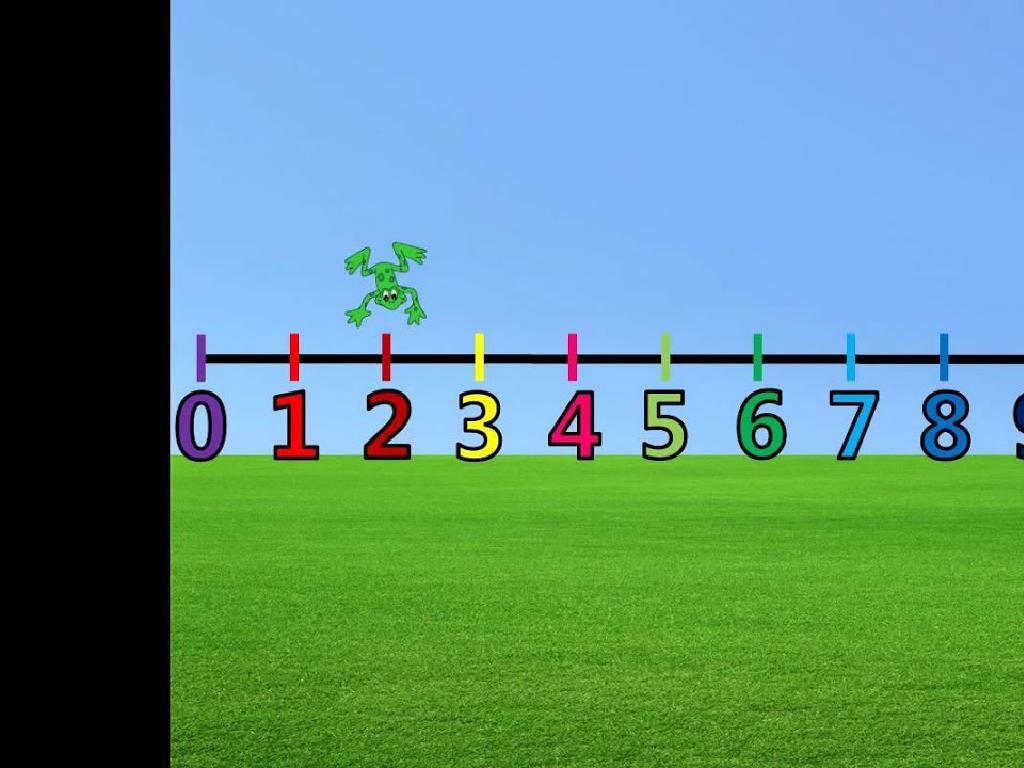Interpret The Meaning Of An Allusion From Its Source
Subject: Language arts
Grade: Eighth grade
Topic: Literary Devices
Please LOG IN to download the presentation. Access is available to registered users only.
View More Content
Exploring Allusions in Literature
– What is an allusion?
– An indirect reference to another work, person, or event
– Allusions as powerful references
– They add depth and allow readers to connect ideas
– Enriching reading with allusions
– Allusions provide layers of meaning and cultural context
– Examples of allusions in texts
– ‘He was a real Romeo with the ladies’ refers to Shakespeare’s Romeo
|
This slide introduces the concept of allusions in literature, which are indirect references to other works, people, or historical events. It’s important to convey to students that allusions can provide a richer reading experience by creating connections and adding layers of meaning. Discuss how allusions rely on the reader’s knowledge and can evoke emotions or ideas. Provide examples from well-known texts or pop culture to illustrate how allusions function. Encourage students to think of allusions they have encountered in their own reading or in media. This will help them understand the power of reference and how it can be used to enhance storytelling.
Understanding Allusions in Literature
– Define an allusion
– A reference to something without explicit mention
– Allusion as a literary ‘wink’
– Subtle nods to familiar concepts or works
– Allusions need reader’s knowledge
– Understanding based on what the reader knows
– Examples of allusions in texts
– Biblical references or historical events in novels
|
An allusion is a powerful literary device used by authors to enrich their writing. It allows them to reference other works, historical events, or cultural ideas without having to explain them in detail. This technique relies on the reader’s familiarity with the subject to understand the depth of the reference. For example, saying ‘He was a real Romeo with the ladies’ alludes to Shakespeare’s Romeo as a symbol of a romantic figure. Encourage students to look for allusions in their reading and consider why the author might have chosen to include them. Discuss how allusions can add layers of meaning and create connections between different works of literature and aspects of culture.
Exploring Types of Allusions in Literature
– Historical allusions explained
– Refers to events like wars, leaders, e.g., ‘He met his Waterloo.’
– Literary allusions and their impact
– References to Shakespeare’s characters or Dickens’ novels.
– Mythological references in texts
– Alludes to Greek gods or heroes, e.g., ‘Achilles’ heel’.
– Biblical allusions in narratives
– References to Adam and Eve or the Good Samaritan.
– Cultural allusions and relevance
– Pertains to modern media, brands, or idioms.
|
This slide aims to introduce students to the various types of allusions commonly found in literature. Historical allusions bring depth to a story by connecting it to real-world events or figures. Literary allusions can create a shared understanding or pay homage to other works. Mythological references often imbue a text with timeless themes and universal conflicts. Biblical allusions can add layers of meaning, especially in Western literature. Cultural allusions can make a text more relatable to contemporary readers. Encourage students to find examples of each type of allusion in their favorite books or movies to deepen their understanding.
Interpreting Allusions in Literature
– Recognize references to known sources
– Look for mentions of famous people, events, or other literature
– Analyze the context of the allusion
– How does the surrounding text support the reference?
– Determine the allusion’s deeper meaning
– What extra layer of meaning does the reference bring?
– Reflect on the effect of the allusion
– Does the allusion change your perception of the text?
|
This slide aims to teach students how to identify and interpret allusions in literary texts. Allusions are indirect or direct references to well-known characters, events, or other literature that authors use to add deeper meaning to their work. Students should learn to recognize these references and consider the context in which they appear to understand the allusion’s purpose. By asking what additional meaning the allusion adds and reflecting on its effect, students can gain a richer understanding of the text. Encourage students to think critically about how allusions can influence their interpretation of a story’s themes and characters.
Understanding Allusions in Literature
– ‘A real Romeo’: Allusion to Shakespeare
– Refers to a charming man, from ‘Romeo and Juliet’
– ‘Wisdom of Athena’: Greek goddess
– Attributes of intelligence and skill, from mythology
– ‘Like a Garden of Eden’: Biblical reference
– Symbolizes utopia or perfect place, from the Bible
– Interpreting allusions enhances understanding
|
This slide aims to help students recognize and interpret allusions, which are references to well-known characters, places, or events from literature, history, or mythology. By understanding allusions, students can gain deeper insights into the text’s meaning and themes. Example 1 alludes to Shakespeare’s romantic hero, Romeo, suggesting someone is a charmer or a lover. Example 2 uses Athena, the Greek goddess, to imply wisdom. Example 3’s allusion to the Garden of Eden evokes images of an untouched, perfect place. Encourage students to think about why an author might use these allusions and how they contribute to the reader’s understanding of the characters or setting.
Interpreting Allusions in Literature
– Comprehend the allusion’s origin
– Identify the reference point of the allusion, such as historical events, literature, or myths.
– Analyze the allusion’s contribution
– How does the allusion enhance the story? Does it add layers of meaning?
– Discuss evoked emotions/ideas
– What feelings or thoughts does the allusion invoke in the reader?
– Reflect on the allusion’s impact
– Consider how the allusion influences the reader’s perception of the text.
|
This slide aims to guide students through the process of understanding and interpreting allusions in literary texts. Start by identifying the source of the allusion, which could be a reference to history, classic literature, or mythology. Discuss how recognizing the allusion can provide deeper insight into the text’s themes and characters. Encourage students to express the emotions or ideas that the allusion brings to their minds and how it affects their overall understanding of the work. Use examples from well-known texts that contain allusions to demonstrate how they function within the narrative and their effect on the reader’s experience.
Activity: Find the Allusion
– Read text excerpts together
– Spot the allusions in text
– Look for indirect references to other works, events, or figures
– Discuss the allusion’s reference
– Connect the allusion to its original source or context
– Reflect on the allusion’s impact
– Consider how the allusion adds depth or meaning to the text
|
This class activity is designed to help students practice identifying and interpreting allusions in literature. Begin by reading selected excerpts from various texts as a class. Encourage students to actively search for allusions within these texts. Once an allusion is identified, guide the discussion to uncover the original source or context of the allusion and its significance. Discuss how the allusion contributes to the text’s themes, characters, or settings. This activity will enhance students’ understanding of how allusions can enrich a text and provide deeper insights into the author’s message. Possible activities include analyzing allusions in classic literature, current media, or comparing historical contexts. Ensure each student has a chance to participate and share their thoughts.
Class Activity: Crafting Allusions
– Select a famous subject for allusion
– Write a sentence with your allusion
– Incorporate a reference to your chosen subject in a creative way
– Share and discuss its impact
– Explain how your allusion adds depth or meaning
– Understand allusion usage
– Grasp how allusions enhance writing
|
This activity is designed to help students practice creating allusions, a literary device where a reference to a well-known person, place, event, or work is used to enhance the meaning of the text. Students should choose a subject that their peers will easily recognize. After writing their sentences or short paragraphs, they will share with the class to discuss how the allusion impacts the understanding and depth of their writing. For the teacher: Prepare to guide students in understanding how allusions work and how they can be powerful tools in writing. Offer examples of allusions from literature and discuss their effects. Provide feedback on the students’ creations and facilitate a discussion on the various ways allusions can be interpreted. Possible activities could include alluding to historical figures, significant events, popular culture, or classic literature.






